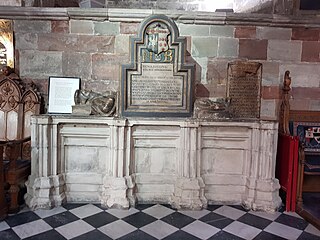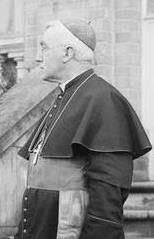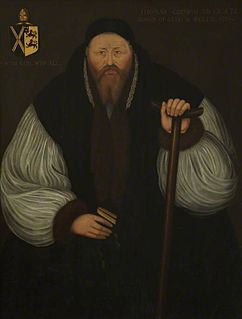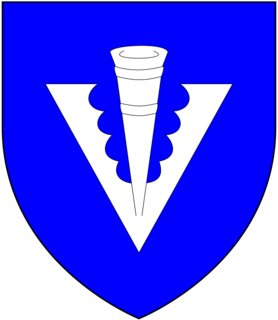Under Elizabeth
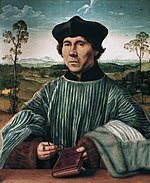
At the beginning of Elizabeth's reign Bourne was kept away from London by illness and official duties, and he is only mentioned once as present in the Parliament. For this reason he was one of the last bishops to be deposed, and he was even named amongst those first commissioned to consecrate Matthew Parker, appointed primate of the queen's new hierarchy. Although Queen Elizabeth expressed herself content with his service, on his refusal to take the Oath of Supremacy, which four Somerset justices were commissioned on 18 October 1559 to administer, his deprivation of office quickly followed. [2]

For a few months Bourne was left in Somerset, apparently as a prisoner on parole; but on 31 May 1560 he received a summons to appear within twelve days before Parker and the Commissioners in London. He set out, as his reply to Parker shows, well knowing what to expect, and on 18 June was committed to the Tower of London as a close prisoner, joining five other bishops already confined there. He remained in the Tower for three years, for most of that time in solitary confinement, when an outbreak of the plague in September 1563 caused him and his companions to be for a time transferred into the keeping of certain of their Anglican successors in office; Bourne himself was apparently committed to that of Bishop Nicholas Bullingham of Lincoln. [2]
There began that continual "tossing and shifting" of the deposed prelates "from one keeper to another, from one prison to another", which William Allen describes as one part of their "martyrdom". The Council, in June, 1565, sent them all back to the Tower, although a little later in a letter of Parker (January 1566), Bullingham is mentioned as though again for a time Bishop Bourne's actual or intended keeper, while all the captive prelates continue during the next two years to be referred to as then in the public prisons. After nearly ten years of this, Bishop Bourne died, at Silverton in Devonshire, having been there committed (apparently not long) to the custody of George Carew, Archdeacon of Exeter and Dean of Windsor. There he was buried in the church. [2]
He is one of the "Eleven Bishops", a picture of whose prison was allowed by Pope Gregory XIII to be erected in the English College church at Rome, amongst pictures of the English Saints and Martyrs, with an inscription declaring that they "died for their confession of the Roman See and Catholic faith, worn out by the miseries of their long imprisonment". [2]


